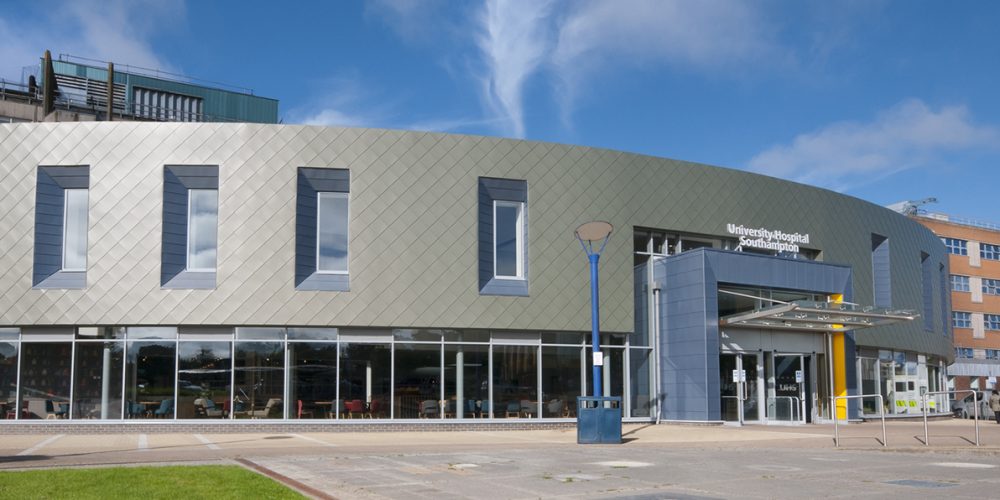FUNDRAISING FOR A CURE
Donating is simple, fast and totally secure. Your details are safe with us and we will never sell them
Just Diagnosed
Having investigations and treatment for cancer can be a very stressful experience. Once you have been diagnosed your doctor may ask for you to have further tests in order to determine what type of treatment will be best for you. You may find it helpful to know why you are having the tests and what the tests will entail.
Summary of blood tests
- Full blood count
- Kidney function tests (urea and electrolytes)
- Liver function tests
- Thyroid function tests
- Pituitary hormone screen e.g. adrenocorticotropic hormone (ACTH), prolactin, growth hormones and cortisol
- Serum calcium, parathyroid hormone levels (in all pancreatic NET patients, as a simple screening test for MEN-1 syndrome)
- NT proBNP
- Chromogranin A&B (NET patients)
Ultrasound scan
This uses sound waves to build up a picture of the inside of your body. You’ll usually be asked not to eat or drink anything for at least six hours before the scan. Once you are lying comfortably on your back, a gel is spread on to your abdomen. A small device that produces sound waves is then rubbed over the area. The sound waves produce a picture on a computer. The test is painless and only takes a few minutes. You may also have an ultrasound of your heart, called an echocardiogram.
CT (computerised tomography) scan
A CT scan takes a series of x-rays that build up a three-dimensional picture of the inside of the body. The scan is painless and takes 10–30 minutes. CT scans use small amounts of radiation that are very unlikely to hurt you, or anyone you come in contact with. You’ll be asked not to eat or drink for at least four hours before the scan.
You may be given a drink or injection of a dye that allows particular areas to be seen more clearly. This may make you feel hot all over for a few minutes. If you are allergic to iodine or have asthma you could have a more serious reaction to the injection, so it’s important to let your doctor know beforehand.
MRI (magnetic resonance imaging) scan
This test is similar to a CT scan, but uses magnetism instead of x-rays to build up detailed pictures of areas of your body. Before the scan you may be asked to complete and sign a checklist. This is to make sure it’s safe for you to have an MRI scan.
Before having the scan, you’ll be asked to remove any metal belongings, including jewellery. Some people are given an injection of a dye into a vein in the arm. This is called a contrast medium and can help the images from the scan show up more clearly. During the test you will be asked to lie very still on a couch inside a long cylinder (tube) for about 30 minutes.
It’s painless but can be slightly uncomfortable, and some people feel a bit claustrophobic during the scan. It’s also noisy, but you’ll be given earplugs or headphones. You’ll be able to hear and speak to the person operating the scanner.
Radioactive scans (octreotide scan or MIBG-scan)
These tests may be used to find where the cancer started (the primary tumour), or to check for any spread of the disease (secondaries or metastases).
Neuroendocrine tumours often absorb a substance called octreotide. A small amount of octreotide is ‘labelled’ with a mildly radioactive tracer to make it show up on scan pictures. The octreotide is then injected into the bloodstream and taken up by NETs, wherever they are.
You will have three scans: one on the day of the injection and two more over the next two days. You will have to keep still while the scanner takes pictures. Each scan takes up to about an hour and a half. You will be able to go home between scans.
Sometimes a substance called MIBG, which may be absorbed by NETs, is used for the scan. It’s also made mildly radioactive, and scans are done in a similar way to the scan using octreotide.
The dose of radioactivity from these scans is very low (about the same amount you get from an x-ray), and almost all of it leaves your body within a week. If you are planning to travel abroad within three months of the scan, let the doctor in the scanning department know. They can give you a letter to show to customs officials. This is because ports and airports have very sensitive radiation detectors that may pick up tiny amounts of radioactivity.
PET/CT scan
This is a combination of a CT (computerised tomography) scan, which takes a series of x-rays to build up a three-dimensional picture, and a positron emission tomography (PET) scan. A PET scan uses low-dose radiation to measure the activity of cells in different parts of the body. PET/CT scans give more detailed information about the part of the body being scanned. You may have to travel to a specialist centre to have one. You can’t eat for six hours before the scan, although you may be able to drink. A mildly radioactive substance is injected into a vein, usually in your arm. The radiation dose used is very small. The scan is done after at least an hour’s wait. It usually takes 30-90 minutes. You should be able to go home after the scan.
MRCP (Magnetic Resonance Cholangio-Pancreatography)
This is a different type of MRI scan that is sometimes used to give clearer pictures of blockages in the bile and pancreatic ducts.
ERCP(Endoscopic Retrograde Cholangio-Pancreatography)
This test uses an endoscope but it also involves taking x-rays. Dye is injected through the tube directly into the opening (the ampulla of Vater) of the pancreatic duct. Any blockages will then show up on x-rays. While the endoscope is in place the doctor may take tissue samples for biopsy. If there is a blockage in your bile duct or pancreatic duct, they may insert a small tube (called a stent) into the duct. This keeps the duct open so that fluid can drain into the duodenum as normal.
Biopsy
A small sample of cells is taken from the tumour and examined under a microscope. You will have a local anaesthetic to numb the area before the sample is taken. Sometimes a biopsy is taken under a general anaesthetic, depending on where the tumour is in your body.
Bone Scan
A bone scan looks for changes or abnormalities in the bones. A bone scan can look at a particular joint or bone. In cancer diagnosis, it is more usual to scan the whole body.
Echocardiogram
If you have been diagnosed with a Carcinoid tumour (a type of NET) it is usual practice to have an Echocardiogram. Carcinoid tumours release chemicals called serotonin and tachykinins into the blood stream which can travel to the heart and affect the cardiac valves. An Echocardiogram is an ultrasound of your heart and is usually performed by a cardiac technician.
Endoscopy
In this test, a flexible camera, called an endoscope, is used to examine the digestive tract. The tube can be inserted down the back of the throat (gastroscopy) or via the rectum (colonoscopy). In both cases you will be offered sedation.
If abnormal-looking tissues are found during this procedure, a sample can be collected and examined under a microscope. A tissue biopsy like this can be the only definitive test for a NET cancer.
Endoscopic Ultrasound
In this test, an ultrasound is first used to locate suspect areas, before an endoscopy is performed.
Wireless Capsule Endoscopy
This is a non-invasive procedure in which a small capsule containing a video camera is swallowed by the patient. As it passes through the gastrointestinal tract it records the mucosa of the small bowel.
These images are transmitted by a radio-frequency signal to a data recorder attached to the patient’s waist. After approximately eight hours the capsule is excreted and the recorded data is downloaded to a computer where it can be viewed, edited and reported.
Waiting to have tests carried out…
Even if you have been given an urgent referral for a particular scan or investigation you may have to wait several days for your appointment, or perhaps as long as two weeks. This can be frustrating and worrying, especially if you are already feeling unwell. If your symptoms get worse or you start to feel more unwell while you are waiting it’s a good idea to get in touch with your GP, or specialist nurse if you already have one. They can contact the specialist team on your behalf if necessary. If you do have to go into hospital for any reason you can ask if any tests you are waiting for can be done while you are there.
Where your tests will take place
University Hospital Southampton (UHS) is made up of 3 different hospitals. The main hospital, Southampton General, is where the majority of your care will take place. It is a busy hospital catering for 100’s of people every week with many different conditions. This introduction to the different hospital departments will provide you with some basic information about the places you will visit, and hopefully make the process a little less daunting.
Outpatients
This is where you will see your consultant to discuss your condition, receive test results and talk about your ongoing care. You may also see your specialist nurse and a dietician here. It is located on E level, West Wing.
Radiology (X-ray)
The radiology department is where you will undergo any x-ray’s, ultrasounds and CT scans. Within this department is a team of Doctors called interventional radiologists, they specialise in treatments such as chemo embolisations and radio frequency ablations. Main x-ray is located on C level.
Pathology
This is where you will have your blood taken by the hospital’s experienced phlebotomy team. It is located on C level.
Pre- assessment
If you need to have an operation or procedure you may receive an appointment to attend a pre-assessment clinic. Here a team of nurses will ask you a range of questions to ensure that you are ready for your treatment, and if necessary will order further tests. It is located on C level.
The Surgical Unit and Ward E8
The surgical unit comprises of wards E5, E7, E8, F3Ds, F5, F7, the Intensive Care Unit (ICU) and Surgical High Dependency Unit (SHDU). During your diagnosis and treatment you may undergo operations and procedures which will require you to spend some time in hospital. This may be on one of the wards or in ICU or SHDU. The need for a higher level of care will be discussed with you prior to you your treatment. However if you are having major surgery it is quite normal to spend the first day or two either in SHDU or ICU so that you can be closely monitored as you recover from the immediate effects of your operation.
Ward E8 is a 29 bedded ward, specialising in liver, pancreatic, biliary and stomach surgery for patients with all kinds of illnesses affecting these organs. The majority of NET patients will stay on this ward. The staff on E8 and the whole of the surgical unit, aim to give high quality patient care in a friendly environment.
Depending on the specific type of procedure you are having done and our assessment of your needs, you may find that you stay on one of the other wards in the surgical unit. As we treat so many NET patients all of our wards are familiar with the management of NET patients.
Wards E5, E7, E8 and SHDU are located on E level, West Wing.
Ward F3Ds is located on F level, East Wing.
Wards F5 and F7 are located on F level, West Wing.
ICU is located on D level, Centre Block.
Dietician
A dietician is there to give you advice on different aspects of your diet. Not everyone will need to see a dietician, but if you have any concerns please speak to your Doctor or specialist nurse who can refer you if necessary.
It is most common to need to talk to a dietician if you have had pancreatic surgery or major bowel surgery, when for the first few months you may need to follow a special diet to help things settle down after the surgery. Patients do not normally need special diets after liver surgery.
Physiotherapists
You may require input from a physiotherapist whilst you are in hospital. This is usually after surgery to help prevent chest infections and to get you back on your feet.
During your care at Southampton General Hospital you and your family will meet many different healthcare professionals, we are all here to make your treatment as comfortable as possible.
Subscribe to our Newsletter
Get informed about the latest news straight to your inbox



